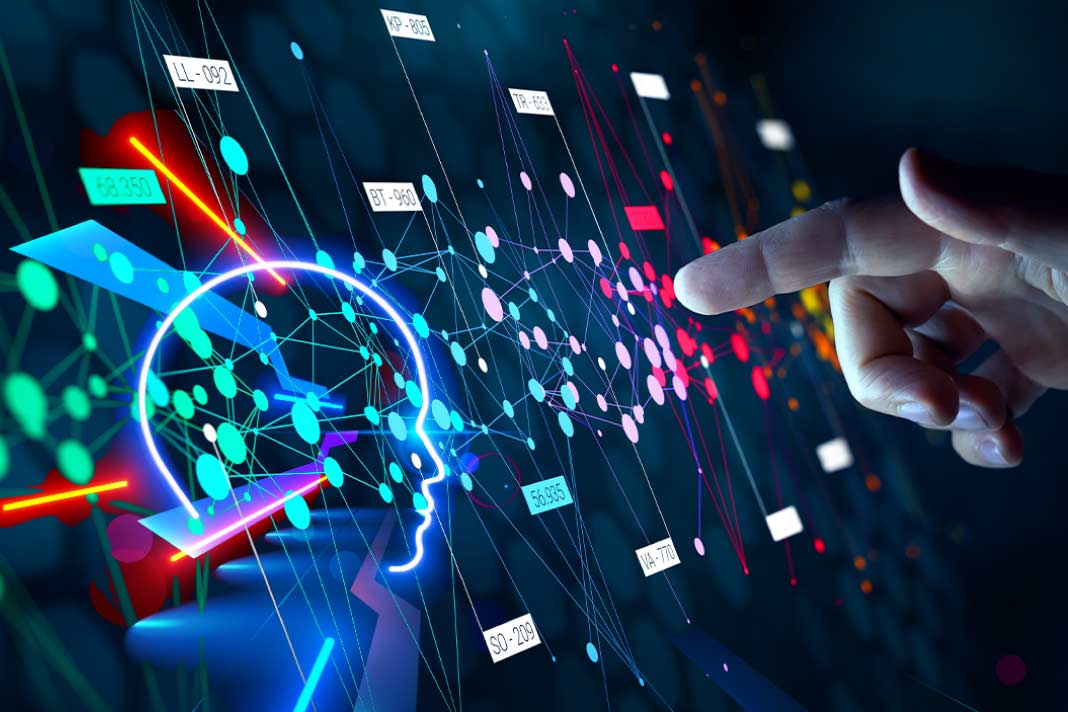Discover Neural Radiance Fields (NeRFs): how they work, their impact on computer graphics and VR, and the challenges and possibilities they bring.
What are neural radiance fields?
A Neural Radiance Field (NeRF) is a recent advancement in deep learning that reconstructs a 3D scene from a collection of 2D images. It allows a user to take multiple pictures of an object or scene and then use those images to generate realistic views of that scene from entirely new angles.
How do neural radiance fields work?
Neural Radiance Fields can be understood as a two-step process: training the system on a scene and then using that training to render new views. Here’s a breakdown of both stages:
Training
- Capturing The Scene: The NeRF training requires a collection of 2D images of the scene from various viewpoints. In addition to the images, information about the camera’s position and orientation (camera poses) for each picture is crucial.
- Learning Light & Density: At the heart of the NeRF lies a special type of neural network called a multilayer perceptron (MLP). This network acts like a powerful function that takes a 5D input:
- 3D Location (XYs): This specifies a particular point in the 3D space of the scene.
- Viewing Direction: This is typically represented by two angles indicating where the camera is looking from.
The MLP is trained on the image data. During this training, the network learns to predict two key things for each 5D input (the three dimensions from the location data and two dimensions from the viewing direction data):
- Color: The color of light originating from that specific point in the scene.
- Density: How tightly packed the scene is at that point. This density affects how much light is absorbed or scattered as it travels through the scene.
By comparing the predicted colors with the actual colors in the training images, the network refines its understanding of the scene’s interplay of light, density, and 3D structure.
Also Read: Explained: Underfitting
Rendering
- Seeing From A New Angle: Now, imagine you want to see the scene from a new viewpoint. Here’s how the NeRF uses its training to render this novel view:
- Casting Rays: The NeRF acts like a virtual camera. It casts rays outward from the camera’s position through each pixel in the final image we want to create.
- Sampling The Rays: As each ray travels through the scene, the NeRF samples multiple points along its path at different depths.
- Querying The Network: For each sampled point, the NeRF uses its knowledge from training. It queries the MLP again, feeding it the 3D coordinates of the point and the viewing direction from the camera.
- Accumulating Light: Based on the predicted color and density at each point, the NeRF calculates how much light contributes to the final color of the pixel from which the ray originated. This considers the total light accumulated along the entire ray as it travels through the scene.
- Volume Rendering: Finally, using volume rendering techniques, the NeRF combines the contributions from all the sampled points along the ray. This creates a final color for that specific pixel in the output image.
- Building The Image: By repeating this process for each pixel in the image, the NeRF builds a new view of the scene from the desired viewpoint, even if that viewpoint wasn’t included in the original training images. This allows for the creation of realistic and immersive 3D experiences.
How are neural radiance fields used?
The NeRF has a range of applications due to its ability to generate realistic 3D views from sparse images. Here are some of the key areas where the NeRF is making a significant impact:
Computer Graphics and Animation
- Scene Reconstruction: The NeRF excels at creating detailed 3D models of real-world scenes from photographs. This can be invaluable for creating realistic environments in movies, video games, and architectural visualizations.
- Novel View Synthesis: The NeRF generates new views of a scene without additional cameras or complex 3D modeling. It is a powerful tool for filmmakers and animators who want to create dynamic and immersive experiences.
Virtual Reality (VR) and Augmented Reality (AR)
- Realistic VR Environments: The NeRF can generate high-fidelity virtual environments for VR experiences. This can lead to more immersive and believable simulations for training, entertainment, and design applications.
- Seamless AR Integration: In AR, the NeRF has the potential to create realistic virtual objects that seamlessly integrate with the physical world. This opens doors for innovative AR experiences in education, product design, and maintenance tasks.
Other Potential Applications
- Medical Imaging: The NeRF’s ability to reconstruct 3D scenes from limited data shows promise in medical imaging. It could create more comprehensive anatomical models from 2D scans (like MRIs), aiding diagnostics and surgical planning.
- Satellite Imagery & Urban Planning: The NeRF can utilize satellite images to generate detailed 3D models of geographical areas. This information can be valuable for urban planning, disaster response, and environmental monitoring.
Also Read: Explained: GPT
What are the benefits and drawbacks of neural radiance fields?
The NeRF offers exciting possibilities but also comes with some challenges that researchers are working actively on.
Benefits
- Unparalleled Realism: It produces exceptionally realistic images and scenes. Compared to traditional methods, it captures the intricate details of light, density, and 3D structure, resulting in stunning visual fidelity in various applications.
- Accurate Representation: By learning a scene’s spatial and radiance information, the NeRF creates a faithful representation. This enhances the perception of depth and realism in virtual environments, making them more immersive and believable.
- Versatile Applications: The NeRF’s applications extend far beyond entertainment. It can potentially revolutionize fields like medicine, computer vision, robotics and even scientific visualization.
Drawbacks
- Computational Demands: Implementing the NeRF often requires substantial computing resources. Training and rendering complex scenes can be computationally expensive, posing a challenge for real-time applications or environments with limited resources.
- Training Complexity: Developing efficient NeRF models involves intricate training processes and optimization techniques. This requires expertise and significant computational power, creating a barrier for some users.
- Data Dependency: The effectiveness of the NeRF heavily relies on the quality and quantity of training data. If the training data is limited or poor quality, the generated views may not be as realistic or accurate.



